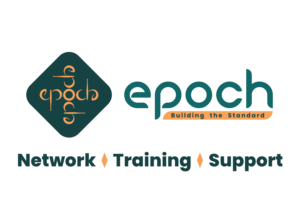Meet the HP ZGX Nano: The AI Performance You’ve Been Waiting For
As AI workloads become more intense and data volumes grow, many teams are rethinking their approach to compute. The cloud still plays an important role, but it’s not always the right tool for every job, especially when you’re facing long wait times, high costs, or strict data security requirements.
The HP ZGX Nano AI Station offers a local alternative. It’s designed for AI teams who need power, flexibility, and control, without the overhead of maintaining a server room or depending on external infrastructure.
Built for Demanding AI Workloads
At the center of the ZGX Nano is the NVIDIA GB10 Grace Blackwell Superchip. With 1000 TOPS of AI performance and 128GB of unified memory, the system can handle models with up to 200 billion parameters. That’s enough for advanced training, fine-tuning, and inference, right from your desk.
If your projects demand more, HP gives you the option to scale. You can link two ZGX Nanos together to expand your computing power without changing your environment. This kind of modular growth is ideal for teams who want high performance without the complexity of managing a larger system.
Faster Iteration, Greater Control
Developing and testing AI models locally comes with clear benefits. You don’t have to wait for cloud resources to free up, and you don’t risk delays caused by shared infrastructure. With the ZGX Nano, you get consistent, on-demand performance that fits your schedule.
There’s also peace of mind in keeping your work local. If you’re dealing with proprietary data, regulatory restrictions, or sensitive intellectual property, you have the ability to run everything on your own hardware.
Designed for Teams, Not Just Individuals
HP includes AI Studio software with the ZGX Nano, helping teams manage their workflows from start to finish. It allows for environment setup, experiment tracking, and resource monitoring, all in one interface. For groups managing multiple projects or collaborating across roles, this kind of visibility can make a big difference.
The ZGX Nano supports up to 4TB of encrypted NVMe storage, so you can keep large datasets close without relying on external drives or network storage. Whether you’re handling medical records, financial data, or video training sets, your files stay secure and accessible.
Use Cases Across Industries
The ZGX Nano is a good match for a range of AI applications:
- Data science teams refining LLMs or building custom AI pipelines
- Developers creating and testing new features for AI-powered apps
- Researchers working on confidential or regulated projects
- Organizations building up in-house AI capacity without overcommitting to cloud costs
Its compact size and quiet operation also make it easy to install in offices, labs, or shared workspaces—no rackmounts or server closets required.
Straightforward Deployment and Growth
You don’t need a massive IT rollout to get started with the ZGX Nano. It’s plug-and-play, designed to work with standard power and networking. This makes it an ideal fit for small and mid-sized teams who want to move fast and get results without jumping through deployment hoops.
And because the system is modular, it supports your growth. Start with one unit and add another when you’re ready. It’s a flexible investment that grows with your needs.
Coming Soon – Be the First to Know!
The ZGX Nano AI Station is launching soon. It’s already generating strong interest from organizations that want to speed up AI development without compromising on security or usability.
If you’re looking for a better way to build and test AI tools locally, now is the time to get on the list. Reach out to us and we’ll make sure you’re the first to know when it’s available.
Final Takeaway
The HP ZGX Nano brings serious AI performance into reach for teams that want more from their desktop hardware. It’s fast, scalable, and practical, and it’s built to meet the real-world needs of developers, researchers, and engineers who want to stay focused on building, not waiting.
















